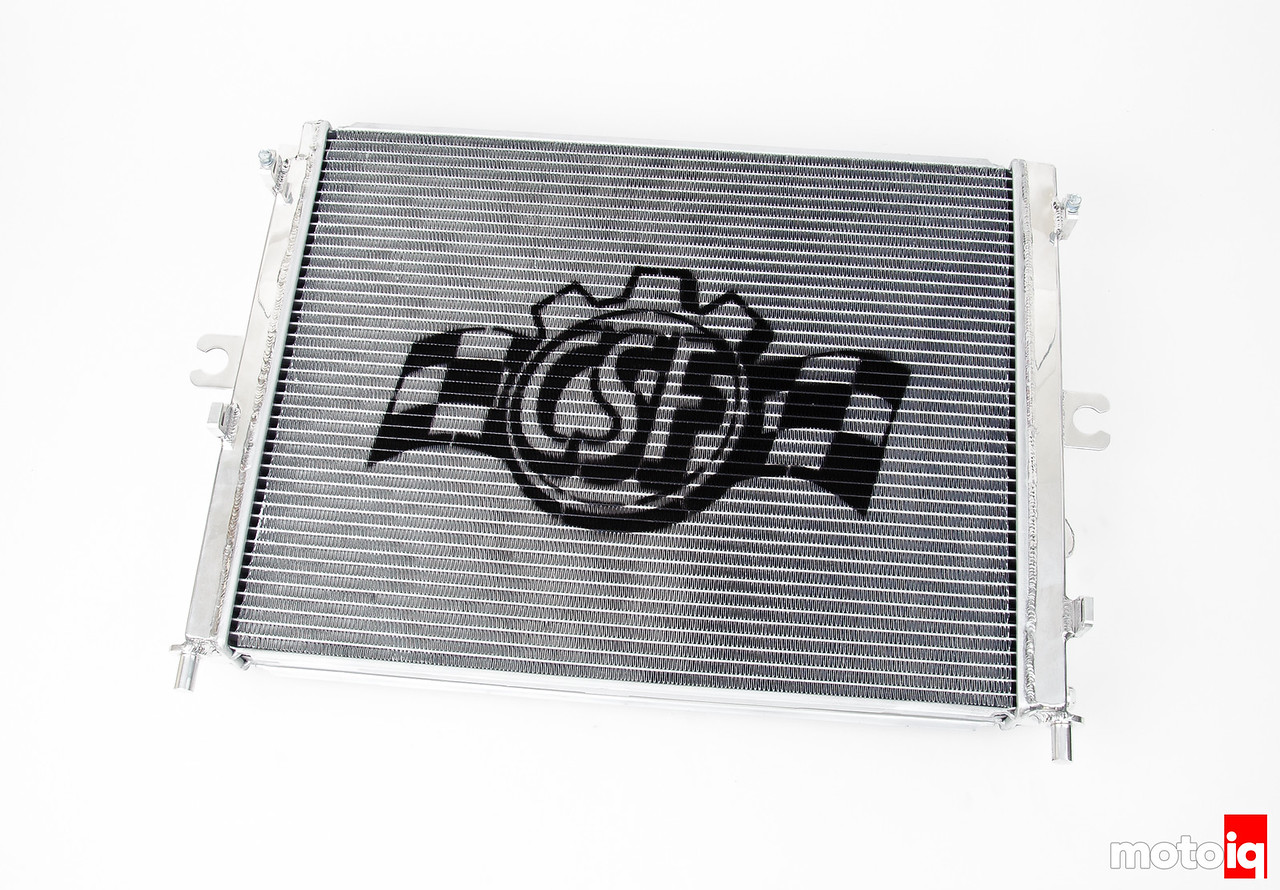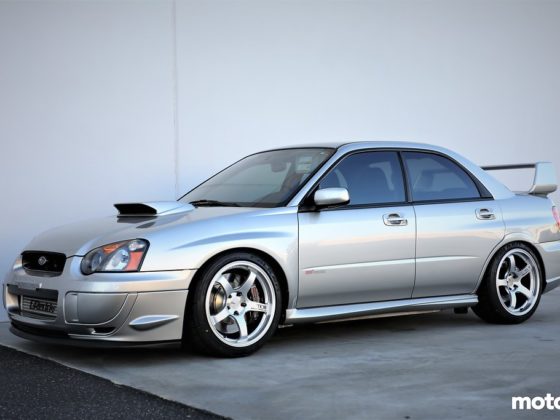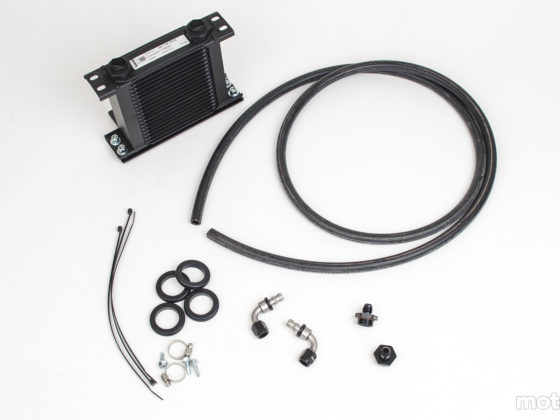
Corvettes always seem to run hot. From our experience, they have run hot since the C4. Heck maybe even before that but we are not old enough to have experienced those models! Our Project C7 Corvette is no exception. We have already done some cooling mods with the addition of GM Performances auxiliary radiator. However, with the summer temperatures of our Southern California tracks reaching into the 100’s, we deemed that we needed even more cooling to assure bombproof reliably of Project C7. CSF Radiators came to our aid with their new high-performance bolt-in radiator and we were going to test it for ease of installation and for cooling effectiveness on the track.

The CSF radiator is designed as a pure bolt-in direct replacement part of the OEM radiator. The OEM radiator has crimped on plastic end tanks that are prone to leak, especially with age or high pressures. The CSF radiator has fabricated tig welded aluminum end tanks that are furnace brazed to the core. This is a much stronger construction method than the stock radiator.

The CSF radiator has tig welded, leak-free, formed hose bibs and provisions for the factory air guides to make installation easier.

The CSF radiator has provisions for the factory vents and surge tank.

These clips on the CSF radiator are for the OEM fan assembly. This helps make an easy installation out of putting the OEM fan and shroud straight in.




11 comments
It’s interesting that the radiator guide only needs to cover 1/3 of the radiator.
I can guess at a few of the factors that go into the consideration of this choice, but coming up with the idea of partial coverage is the stroke of genius. Deciding on how much to cover must be an interesting exercise too.
My opinion is that GM wanted to have some airflow through the engine compartment to keep the cats from cooking off stuff in there, so some air is vented out the hood, the rest flows through the engine compartment, keeps the cats cool and then exits out the fender vents.
And it also prevents any problems with driving or parking your car in heavy rain because the water does not touch any engine components.
Is the CSF a single pass radiator like the stock unit or double pass?
Single-pass.
random note, the oem auto Z06 rad is also 2″ thick… idk if it cools as well as the CSF tho
what temps were you guys hitting with the aux rad installed before switching to the CSF? You say C7’s hit 220-230 at the track, but nothing about specifically this car before and after…
also, limp mode is 260. at 230 they start pulling timing and reducing power.
We were hitting the same peak temp but on a cooler day like high 80’s low 90’s.
You provided pictures and instructions for installing the CSF Radiator. But you failed to provide information on how to order it and l have no idea on how much it may cost to obtain it.
You can follow the link to CSF Radiators at the end of the article.
How about the link to CSF’s web site?